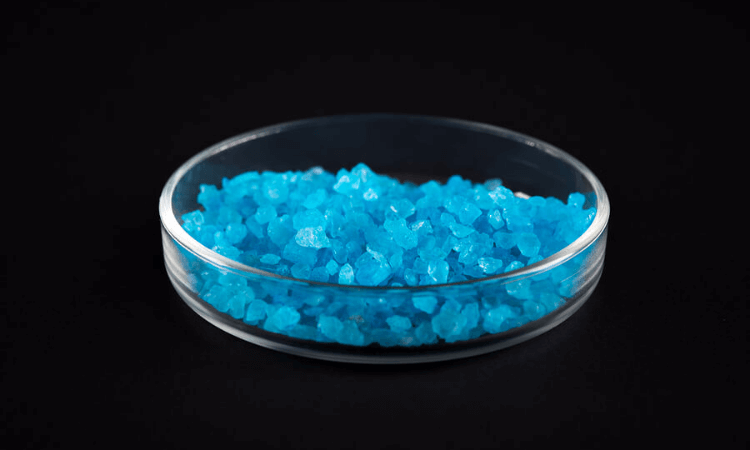
Methylone is a synthetic designer drug that works on the brain similarly to MDMA or ecstasy, as it is nearly identical, in a chemical sense. It is a stimulating synthetic cathinone that increases energy, alertness, and excitability.
Because of the energetic high methylone can trigger, it is frequently referred to, along with other drugs, as “bath salts.” It is commonly sold on its own. It is produced in large batches clandestine labs, so methylone is generally much less expensive than MDMA, cocaine, and methamphetamine.
Although methylone is not very well-understood, we do know the drug has been related to the deaths of people (albeit rarely) due to its intense side effects.
Methylone Abuse and Potential for Addiction
The Drug Enforcement Administration reports that methylone was first found on the illicit drug market in the U.S. in 2009. It was eventually classified as a Schedule I substance in 2013, so for at least four years, it could be purchased legally. Although methylone is no longer lawfully obtained in the U.S., other synthetic cathinones remain unclassified at the federal level.
Although some older adults may abuse synthetic cathinones like methylone, the drug market is comprised mostly of adolescents and young adults. They often gain access to these drugs through convenience stores or the internet. A common source of use is in social settings such as clubs, concerts, and raves.
Signs of Abuse
When an individual uses a substance, such as bath salts, that contains methylone, symptoms are similar to those of other stimulants, including MDMA, cocaine, and meth:
- Unrealistic feelings of superiority
- Increased talkativeness
- High sociability and excitability
- Lowered inhibitions
- Impaired judgment, impulsivity
- Feelings of pleasure and well-being
- High energy and increased alertness
- Accelerated pulse and breathing
- Increased libido
- High blood pressure
- Increased anxiety
- Paranoia
- Decreased appetite
- Increased hostility or aggression
The comedown effects from powerful stimulants such as synthetic cathinones like methylone may include profound depression and fatigue. These symptoms may compel people to use more of the drug to relieve psychological discomfort.
Toxic Effects and Signs of Overdose
Toxic effects of methylone commonly include moderate symptoms, such as the following:
- Accelerated heart rate
- High blood pressure
- Elevated body temperature
- Derealization
- Pupil dilation and blurry vision
- Impaired concentration and focus
- Restlessness
- Altered time perception
- Muscle tension and aches
- Teeth grinding and jaw clenching
- Insomnia
- Profuse sweating
Signs of severe side effects and an overdose on methylone can include the following:
- Hyperthermia
- Dizziness
- Profound confusion
- Hallucinations
- Depersonalization
- Paranoid delusions
- Extreme, unwarranted fear
- Nausea and vomiting
- Seizures
- Rashes
Methylone and other cathinones do not have a substantial impact on brain neurotransmitters, such as serotonin, dopamine, and adrenaline. For this reason, methylone may be less addictive than other stimulants, but the depletion of dopamine at high doses can be toxic and hazardous to one’s health.
Abusing synthetic cathinones like methylone over the long term can alter neurotransmitters and result in mood disorders, such as depression. This can happen long-term. Mental health problems that may co-occur with abuse of methylone or other cathinones include the following:
- Anxiety
- Depression
- Acute or chronic psychosis
- Episodes of mania
- Paranoid delusions
- Suicidal ideations
As noted, in very rare instances, methylone use has been linked to fatal overdoses. In one study from 2011, researchers talked about three such fatalities. All subjects exhibited seizure-like activity and very high body temperatures (up to 107°F) before their deaths. Two of the individuals also developed metabolic acidosis, a condition in which the body produces too much acid.
One of the three cases had prolonged hospitalization before death presented with symptoms similar to sympathomimetic toxicity, which can occur with the use of certain prescription and non-prescription drugs that have stimulating properties. In addition to cathinones and MDMA, Examples of non-prescription sympathomimetic agents include OTC cold medicines containing ephedrine and illegal street drugs, such as cocaine and meth.
Overcoming Methylone Abuse and Addiction
Since methylone is a relatively new psychoactive substance, there are no known drugs that have been approved by the FDA to be used in medication-assisted therapy. Instead, the detox process involves the management of withdrawal symptoms through other means, generally at the discretion of a doctor or addiction specialist. Fortunately, the symptoms are often relatively mild when compared to those of many other drugs of abuse, and can be effectively treated in a hospital or detox facility, without issue.
Getting treatment for you or a loved one who abuses a potent and dangerous drug like methylone is crucial. Recovery in Tune specializes in the treatment of substance abuse and addiction, and our programs include evidence-based therapies and services especially designed to be beneficial for those who struggle with drug or alcohol abuse.
If you or someone you love is ready to take the first step to a drug-free life, we urge you to contact us as soon as possible and find out how we can help!